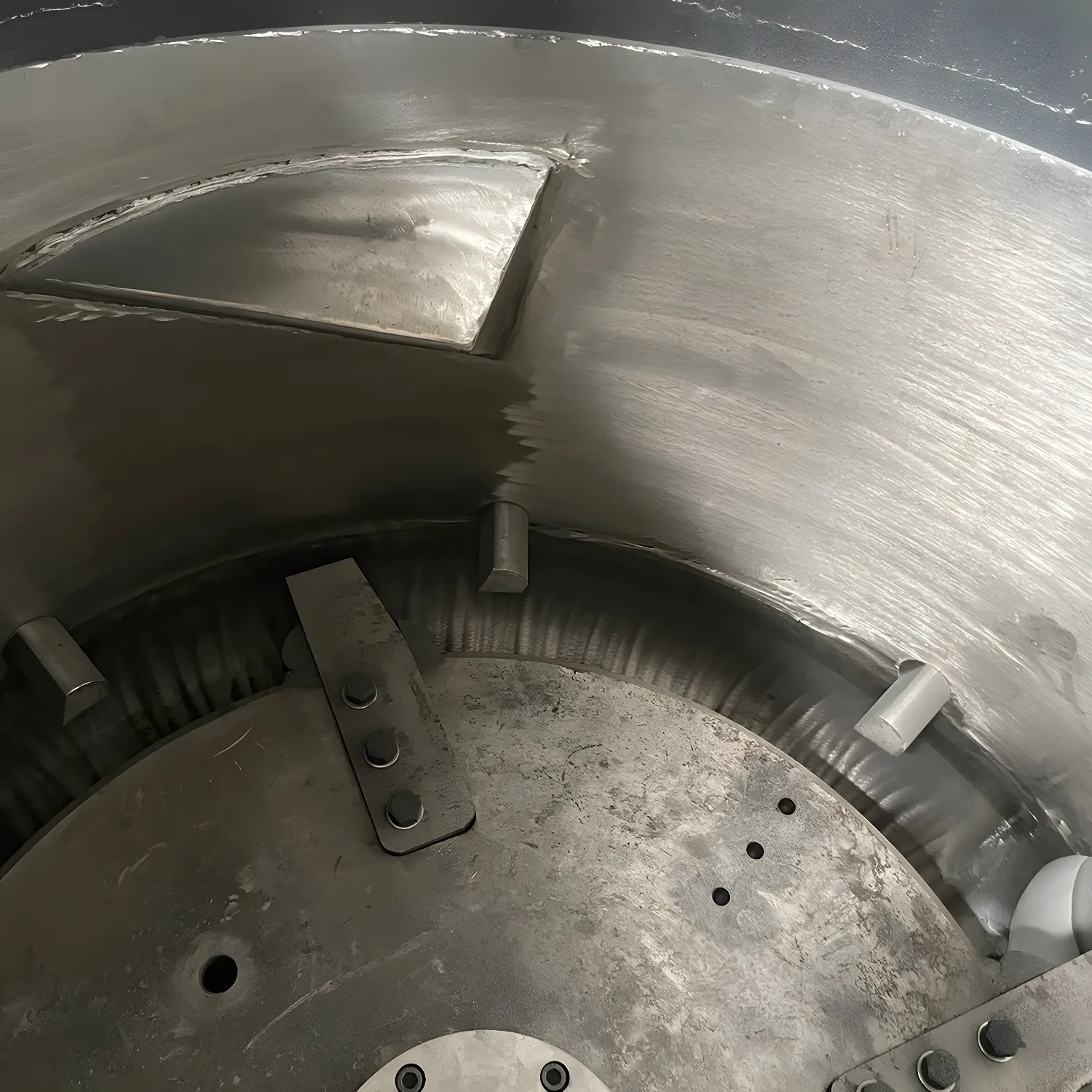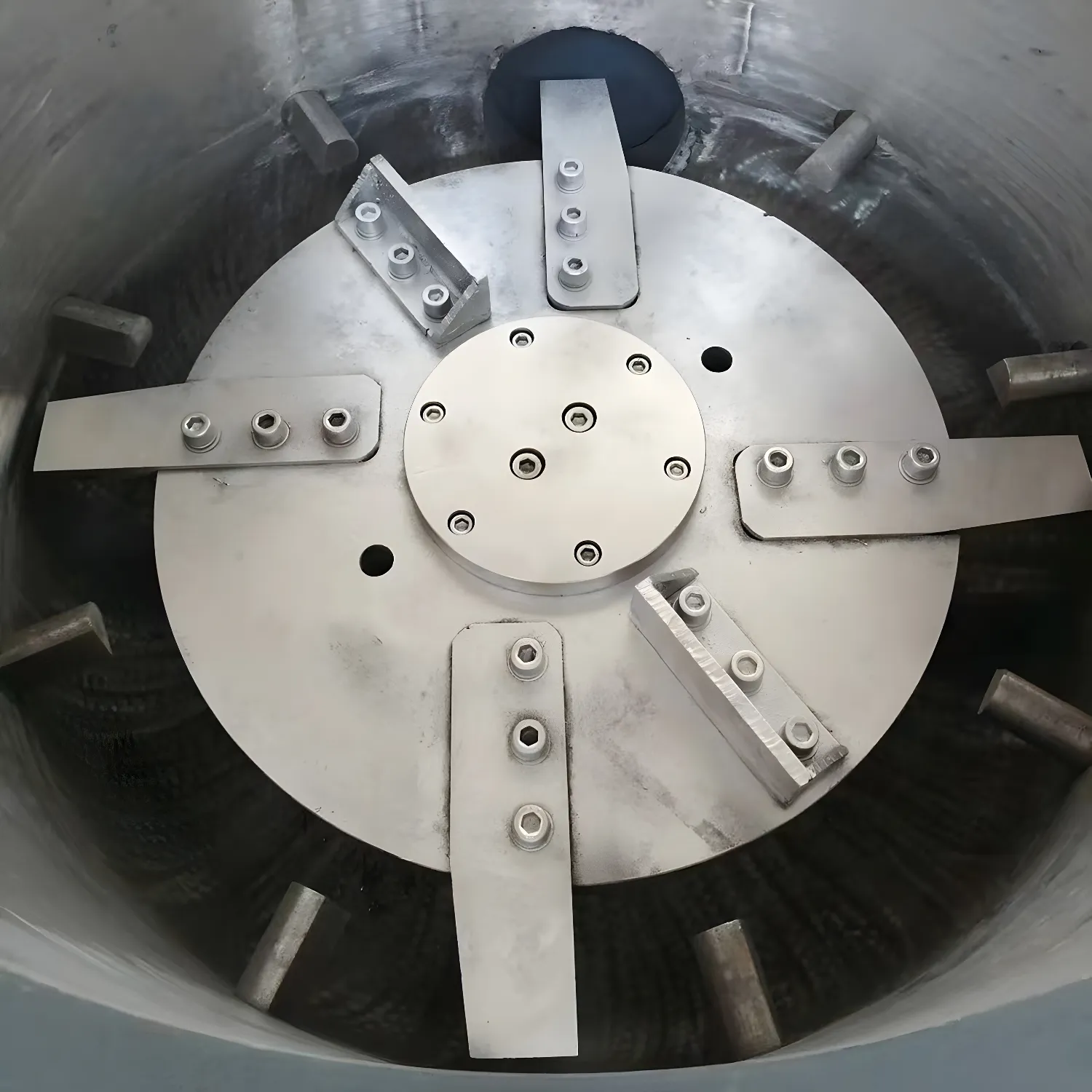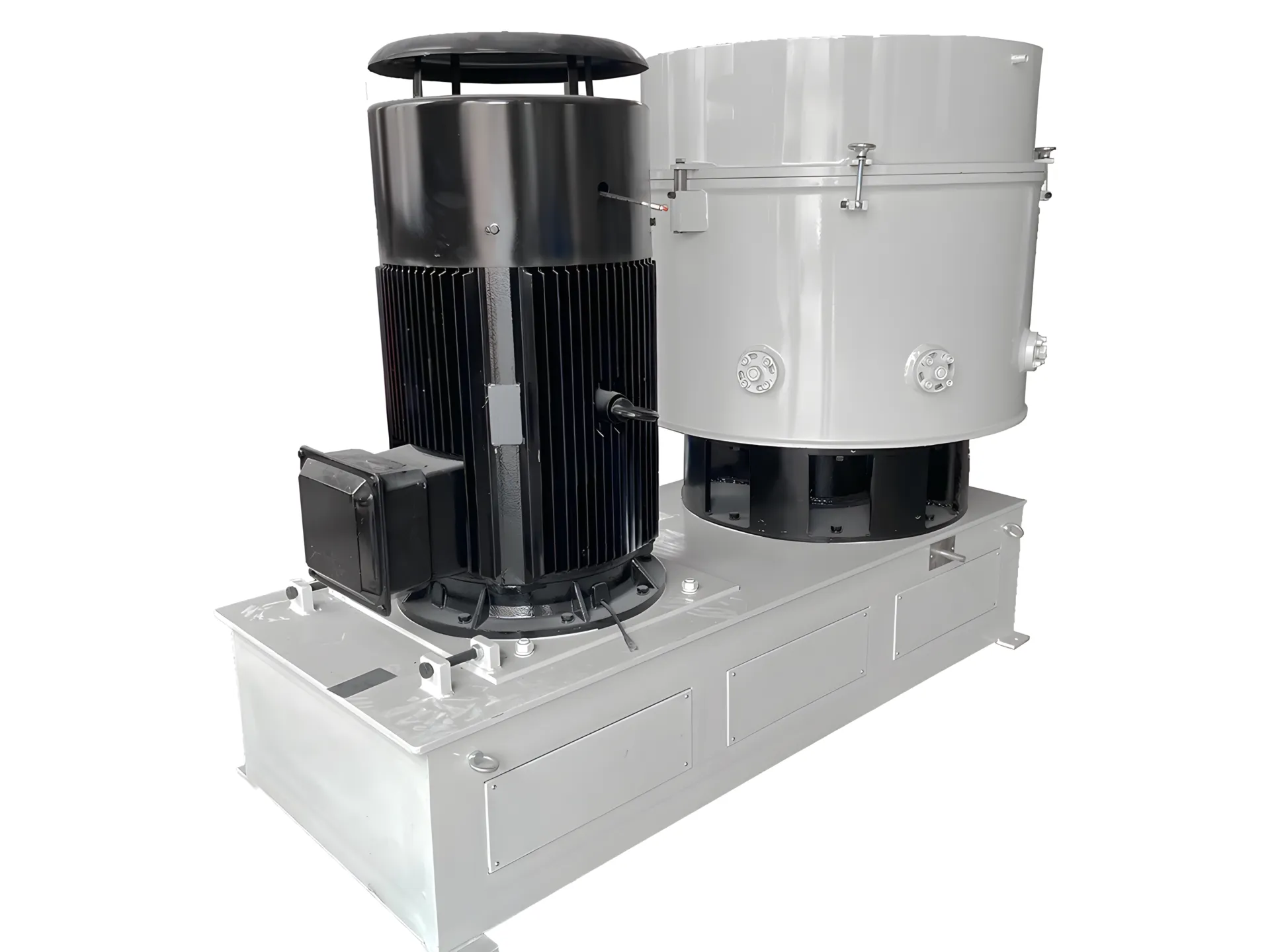High-Speed Plastic Agglomerator
The direct, powerful solution for converting thin plastic films, woven bags, and foam scrap into dense, free-flowing granules, ready for immediate reuse in your production line.
Explore Models & PricingKey Advantages of the Plastic Agglomerator
High-Speed Densification
Rapidly reduces the volume of fluffy materials, making them easy to handle, store, and feed.
Direct Conversion
A single machine transforms scrap directly into granules without a separate melting process.
Friction-Based Process
Uses mechanical friction to heat and semi-plasticize material, saving energy compared to full extrusion.
Instant Cooling System
A smart water-injection system ensures rapid cooling to form consistent, non-sticky granules.
Working Principle: The Power of Friction
- Feeding & Cutting: Plastic waste is fed into the chamber, where high-speed rotating blades instantly shear it into smaller fragments.
- Frictional Heating: The fragments are thrown against the chamber wall, generating intense heat from friction, causing them to become semi-plasticized and sticky.
- Water Quenching: Just before the material clumps together, a spray of water is injected, instantly cooling the mass and causing it to solidify.
- Granulation: The ongoing cutting action breaks the cooled, solidified mass into dense, irregular granules, which are then discharged from the machine.
Ideal for Various Thermoplastics
- PP & PE Films (HDPE, LDPE)
- PP Woven & Non-Woven Bags
- Flexible PVC
- Polystyrene (PS & EPS Foam)
- Other thin-walled (under 2mm) materials
Technical Parameters
| Model | Capacity (kg/h) | Power (kW) | Volume (L) | Weight (kg) |
|---|---|---|---|---|
| RTM-100 | 80-100 | 18.5 | 75 | 890 |
| RTM-200 | 150-200 | 30 | 150 | 1130 |
| RTM-300 | 250-300 | 55 | 225 | 1518 |
| RTM-500 | 350-450 | 90 | 375 | 2500 |
| RTM-800 | 500-600 | 110 | 675 | 3800 |
Machine Gallery



Frequently Asked Questions
What is the difference between an agglomerator and a pelletizer?
A **Plastic Agglomerator** uses high-speed friction to heat and densify plastic into irregular, popcorn-like granules without fully melting it. It's a fast, single-step process. A **Pelletizer** (or extruder) completely melts the plastic and pushes it through a die to create uniform, cylindrical pellets. Agglomeration is often used as a pre-treatment step to densify material before it enters a pelletizer, or as a standalone solution for less demanding applications.
Are the granules from an agglomerator ready for injection molding?
Yes, the dense granules are often suitable for direct feeding into extruders or injection molding machines. However, because they haven't been fully melted and filtered like in a pelletizer, their consistency might vary. For applications requiring very high precision and purity, these granules are an excellent input material for a secondary pelletizing process.
Can this machine handle wet materials?
The high-speed friction process generates significant heat, which helps to dry off some surface moisture from the materials. However, the machine is not a dedicated dryer. It performs best with relatively dry materials. The small amount of water injected at the end is for cooling, not for washing.
Streamline Your Film & Fiber Recycling
The Plastic Agglomerator is a powerful, straightforward, and cost-effective method to reclaim value from your plastic waste streams. Contact us today for detailed specifications and pricing.



